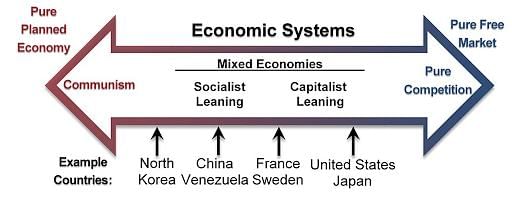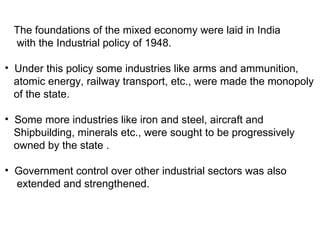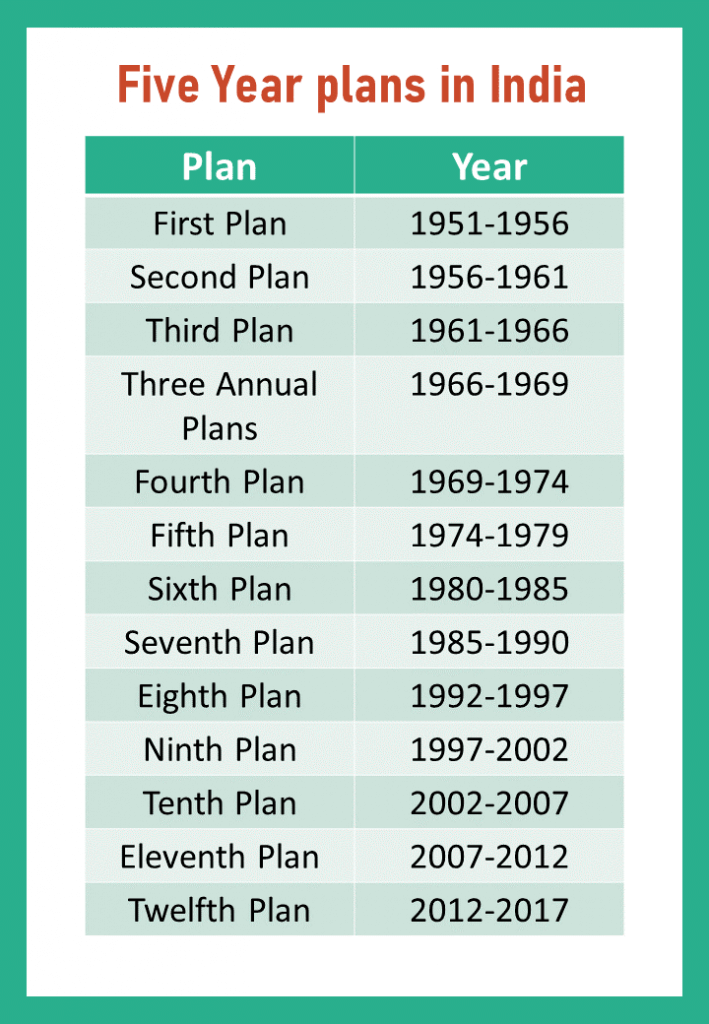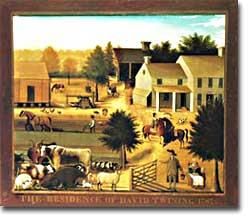|
Card: 1 / 48 |
What economic system did India adopt after independence to balance capitalism and socialism? |
|
Card: 2 / 48 |
India adopted a mixed economy system that combined the best aspects of both capitalism and socialism.  |
|
Card: 3 / 48 |
The Planning Commission was established to oversee India's development plans, but it was replaced by ___ in 2014. |
|
Card: 5 / 48 |
True or False: Jawaharlal Nehru wanted to adopt the Soviet Union's version of socialism for India. |
|
Card: 6 / 48 |
False. Nehru was drawn towards socialism but did not want to adopt the Soviet model due to its excessive government control.
|
|
Card: 7 / 48 |
Fill in the blank: The 'Industrial Policy Resolution' of 1948 reflects India's choice of a ___ economy. |
|
Card: 11 / 48 |
Riddle: I outline the vision for the next 20 years in India and focus on goals to be achieved within a specific time frame. What am I? |
|
Card: 13 / 48 |
What was the main concern for Indian planners when designing development plans? |
|
Card: 14 / 48 |
Balancing development goals to avoid conflicts, especially in the context of modern technology reducing labor employment. |
|
Card: 17 / 48 |
Fill in the blank: The emphasis on ___ in the Five-Year Plans led to the Green Revolution in India. |
|
Card: 19 / 48 |
True or False: The Five-Year Plans aimed to equally prioritize all economic goals without any trade-offs. |
|
Card: 20 / 48 |
False. Planners must make choices and prioritize certain goals over others due to limited resources. |
|
Card: 21 / 48 |
Riddle: I am crucial for ensuring everyone shares the benefits of development fairly, reducing poverty and inequality. What am I? |
|
Card: 25 / 48 |
Fill in the blank: The initial Five-Year Plans in India particularly emphasized self-sufficiency in the ___ sector. |
|
Card: 27 / 48 |
Short Answer: Why was modernization emphasized in the context of India's economic development? |
|
Card: 28 / 48 |
Modernization was emphasized to reduce reliance on foreign goods and ensure independence from external pressures. |
|
Card: 29 / 48 |
What sector of the economy is primarily reliant on natural resources during the initial stages of development? |
|
Card: 31 / 48 |
Fill in the blanks: As farming techniques improved, individuals transitioned from agriculture to becoming ___, ___, and ___ of their products. |
|
Card: 33 / 48 |
True or False: The secondary sector became important due to a decrease in factory jobs. |
|
Card: 34 / 48 |
False. The secondary sector became important due to an increase in factory jobs. |
|
Card: 35 / 48 |
What has led to the majority of individuals in developed nations being employed in the service sector? |
|
Card: 37 / 48 |
Riddle: I am the stage where people first relied on nature's gifts, but as skills grew, I turned into crafts and trades. What am I? |
|
Card: 39 / 48 |
Fill in the blank: The development of high-yield varieties of seeds has led to an increase in ___ in the primary sector. |
|
Card: 41 / 48 |
What role did the Industrial Revolution play in the evolution of economic sectors? |
|
Card: 43 / 48 |
True or False: Over the last century, the primary sector has remained the largest employer in developed nations. |
|
Card: 46 / 48 |
The main objectives included eliminating intermediaries, changing land ownership to the tiller to incentivize agricultural investment, and imposing land ceilings to promote equitable distribution of land. |
|
Card: 47 / 48 |
Fill in the blanks: The success of land reforms in states such as ___ and ___ can be attributed to strong governmental commitment to land redistribution. |






























